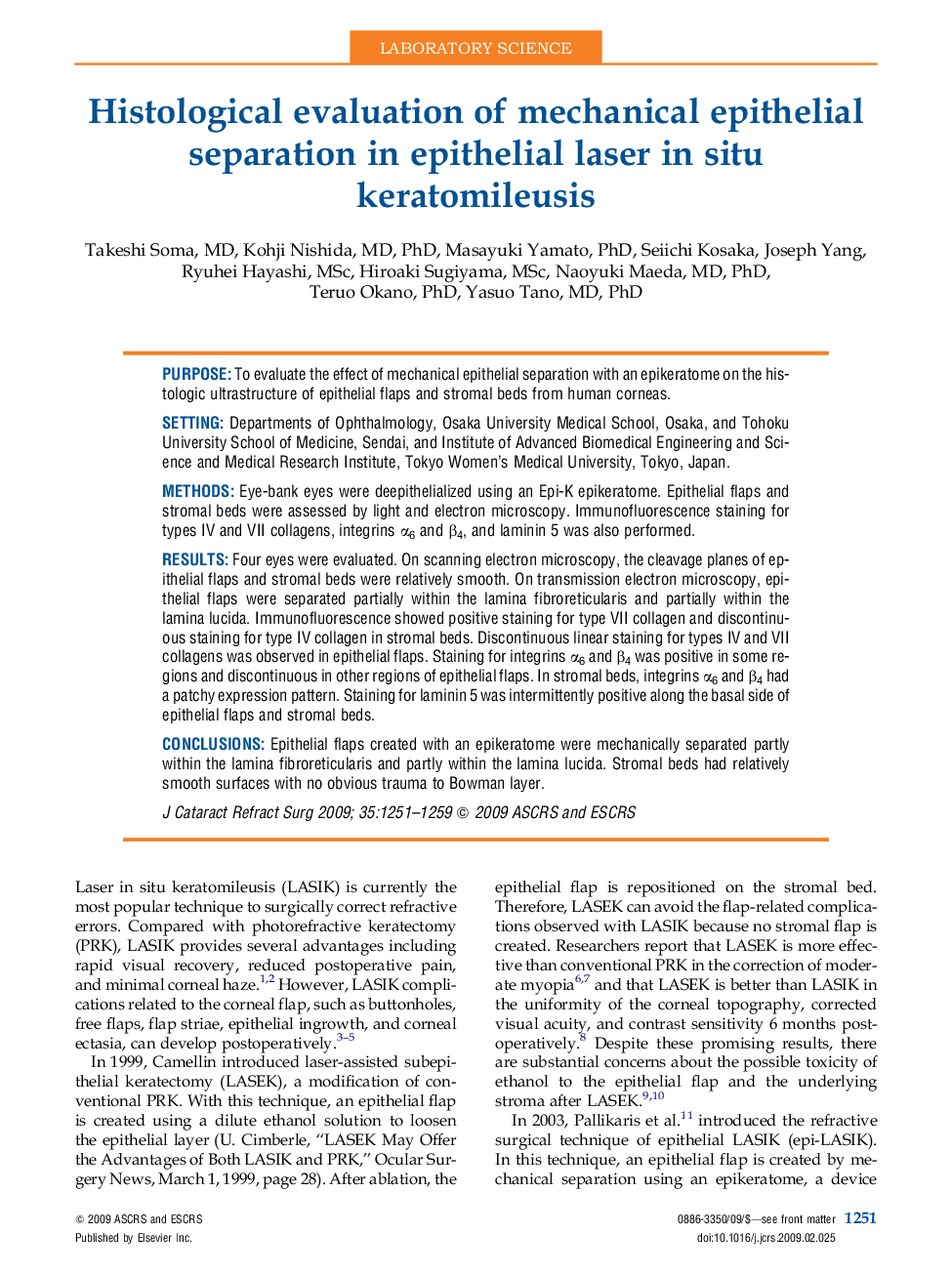| Article ID | Journal | Published Year | Pages | File Type |
|---|---|---|---|---|
| 4018027 | Journal of Cataract & Refractive Surgery | 2009 | 9 Pages |
PurposeTo evaluate the effect of mechanical epithelial separation with an epikeratome on the histologic ultrastructure of epithelial flaps and stromal beds from human corneas.SettingDepartments of Ophthalmology, Osaka University Medical School, Osaka, and Tohoku University School of Medicine, Sendai, and Institute of Advanced Biomedical Engineering and Science and Medical Research Institute, Tokyo Women's Medical University, Tokyo, Japan.MethodsEye-bank eyes were deepithelialized using an Epi-K epikeratome. Epithelial flaps and stromal beds were assessed by light and electron microscopy. Immunofluorescence staining for types IV and VII collagens, integrins α6 and β4, and laminin 5 was also performed.ResultsFour eyes were evaluated. On scanning electron microscopy, the cleavage planes of epithelial flaps and stromal beds were relatively smooth. On transmission electron microscopy, epithelial flaps were separated partially within the lamina fibroreticularis and partially within the lamina lucida. Immunofluorescence showed positive staining for type VII collagen and discontinuous staining for type IV collagen in stromal beds. Discontinuous linear staining for types IV and VII collagens was observed in epithelial flaps. Staining for integrins α6 and β4 was positive in some regions and discontinuous in other regions of epithelial flaps. In stromal beds, integrins α6 and β4 had a patchy expression pattern. Staining for laminin 5 was intermittently positive along the basal side of epithelial flaps and stromal beds.ConclusionsEpithelial flaps created with an epikeratome were mechanically separated partly within the lamina fibroreticularis and partly within the lamina lucida. Stromal beds had relatively smooth surfaces with no obvious trauma to Bowman layer.
